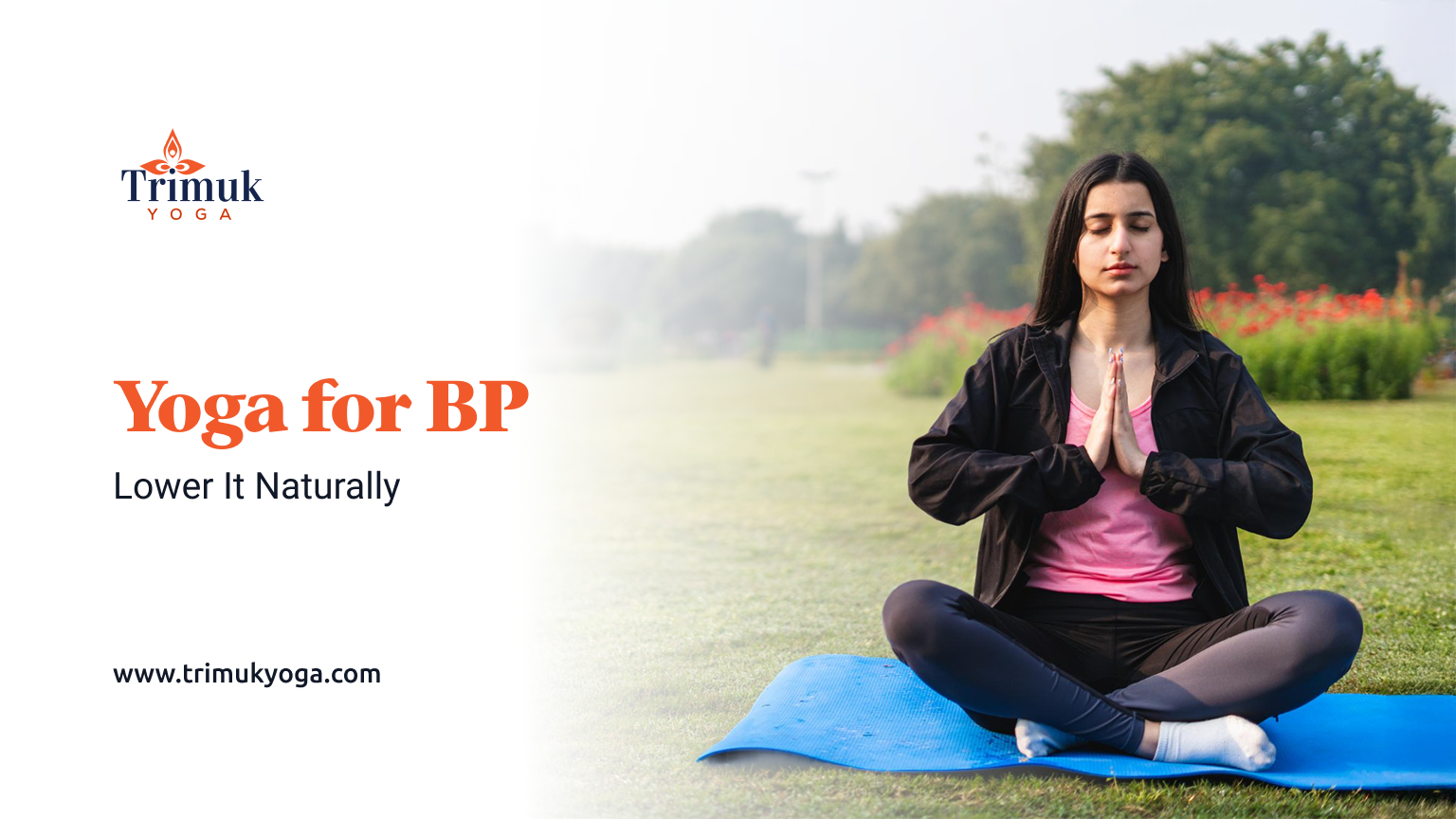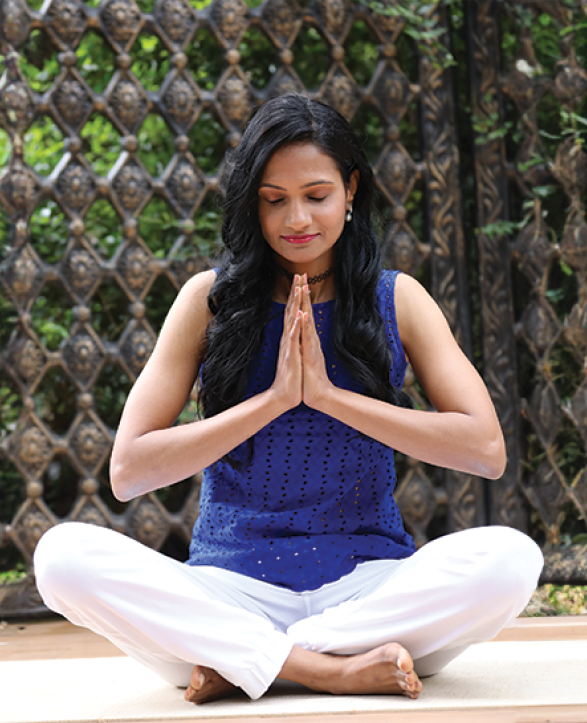Thyroid disorders affect millions of women worldwide — often leading to fatigue, mood swings, weight changes, and irregular menstrual cycles. While medication remains the cornerstone of treatment, yoga offers a natural and effective way to support thyroid function, reduce stress, and restore hormonal balance.
In this guide, you’ll discover:
- What the thyroid does and why women are more prone to imbalance
- The science behind yoga’s impact on thyroid health
- A safe yoga routine tailored for hypothyroidism and hyperthyroidism
- Breathwork, lifestyle tips, and common FAQs

Understanding Thyroid Disorders in Women
The thyroid gland — a butterfly-shaped organ in the neck — regulates metabolism, temperature, and energy levels through hormones T3 and T4.
Common Thyroid Issues Among Women
- Hypothyroidism: Underactive thyroid causing fatigue, weight gain, dry skin, depression, and menstrual irregularities.
- Hyperthyroidism: Overactive thyroid leading to anxiety, insomnia, rapid heartbeat, and weight loss.
Hormonal fluctuations during puberty, pregnancy, and menopause make women especially vulnerable to thyroid imbalances. Chronic stress and autoimmune conditions (like Hashimoto’s or Graves’ disease) are also major contributors.
The Science: How Yoga Supports Thyroid Health
Recent studies show that yoga can complement medical treatment by improving hormone regulation and overall well-being.
1. Reduces Stress & Cortisol Levels
Chronic stress raises cortisol, which disrupts thyroid hormone conversion. Yoga and pranayama (breath control) lower cortisol and calm the nervous system.
2. Enhances Blood Circulation in the Neck Area
Gentle poses like Supported Bridge and Fish Pose increase blood flow around the thyroid gland, encouraging better glandular activity.
3. Improves Vagal Tone and Hormonal Harmony
Breath-based practices activate the parasympathetic nervous system, improving metabolism, digestion, and mood — all interconnected with thyroid health.
4. Encourages Consistency and Mindful Living
Yoga promotes self-awareness, better sleep, and discipline in daily habits — which support long-term hormonal balance.

Best Yoga Poses for Thyroid Disorders in Women
Here are the most recommended and research-backed poses that gently stimulate the thyroid region and reduce stress.
1. Setu Bandhasana (Supported Bridge Pose)
Opens the chest and throat while strengthening the spine. How to do: Lie on your back, bend your knees, place feet hip-width apart, and lift hips. Use a yoga block under your sacrum for support. Benefit: Stimulates the neck and thyroid gently, improves circulation.
2. Matsyasana (Fish Pose)
Stretches the neck and chest, countering poor posture and lethargy. How to do: Lie on your back, arch the chest upward, resting on elbows. Avoid compressing the neck. Benefit: Encourages thyroid blood flow and improves breathing capacity.
3. Bhujangasana (Cobra Pose)
Activates the throat, lungs, and spine. How to do: Lie face down, place palms near shoulders, and lift your chest halfway while keeping elbows bent. Benefit: Reduces stiffness and supports glandular stimulation.
4. Viparita Karani (Legs Up the Wall Pose)
A restorative pose ideal for thyroid and adrenal fatigue. How to do: Lie near a wall and extend your legs upward; relax arms beside your body. Benefit: Calms the nervous system, reduces cortisol, and relieves swelling in legs.
5. Shavasana (Corpse Pose)
Promotes deep relaxation and hormonal recovery. How to do: Lie flat on your back, close eyes, and focus on breath for 5–10 minutes. Benefit: Lowers heart rate, balances stress hormones, and enhances recovery.
Best Pranayama (Breathing Techniques) for Thyroid Health
Breathwork is a key part of any yoga routine for thyroid balance.
- Anulom Vilom (Alternate Nostril Breathing): Balances the left and right energy channels, calming the mind and improving oxygen flow.
- Bhramari (Humming Bee Breath): Reduces anxiety and quiets the mind, supporting better hormone function.
- Ujjayi (Victorious Breath): Gentle throat-focused breath that increases oxygenation to the thyroid area.
- Deep Diaphragmatic Breathing: Restores parasympathetic activity and helps regulate metabolism.
Practice these for 5–10 minutes daily in a quiet, comfortable space.

An 8-Week Yoga Plan for Thyroid Support
Consistency is key. Follow this simple structure and adapt intensity to your comfort level.
Weeks 1–2: Gentle breathing, neck mobility, and restorative poses. Weeks 3–4: Add standing poses and longer pranayama sessions. Weeks 5–6: Include moderate holds and basic backbends for strength. Weeks 7–8: Combine gentle flow with guided relaxation or Yoga Nidra for deep recovery.
Even 20–30 minutes a day of mindful movement can yield visible improvements in mood, sleep, and energy within weeks.
Precautions & Safety Tips
- Always consult your doctor before beginning a new yoga routine, especially if you’re adjusting thyroid medication.
- Avoid strong neck compressions or long inversions (like Shoulder Stand) unless supervised.
- If you have hyperthyroidism, skip intense heat or breath retentions — focus on calming, cooling postures.
- Practice on an empty stomach and hydrate well.
Lifestyle Tips to Complement Yoga
- Eat a balanced diet: Include selenium- and iodine-rich foods like eggs, nuts, and whole grains (unless restricted by your doctor).
- Sleep 7–8 hours nightly to promote recovery and hormonal stability.
- Manage stress: Meditation, journaling, and deep breathing can prevent cortisol spikes.
- Stay consistent: Short daily sessions matter more than occasional long workouts.
Move, Breathe, and Balance
The thyroid reflects how gracefully your body adapts to life’s pace. With mindful movement, steady breath, and inner awareness, you can help your hormones — and yourself — return to harmony.
Remember: Yoga doesn’t replace medication, but it transforms how your body heals. When combined with professional medical guidance, it becomes a powerful, holistic path to balance and vitality.
🌸 Empower Your Healing Journey
At Trimuk Yoga, we specialize in programs that blend traditional yoga therapy with modern wellness science — designed for women managing thyroid conditions.
Our Thyroid Wellness Program includes:
- Personalized online sessions led by certified instructors
- Gentle, hormone-balancing sequences
- Guided breathwork and restorative yoga for stress relief
✨ Visit trimukyoga to begin your thyroid-healing journey today. Move with purpose. Breathe with awareness. Heal with grace. 💫

FAQs — Yoga for Thyroid Disorders in Women
1. Can yoga cure thyroid disorders?
No. Yoga cannot cure thyroid disease, but it can help regulate hormones, reduce stress, and support medication effectiveness.
2. Which thyroid condition benefits most from yoga?
Yoga has shown stronger evidence for hypothyroidism — improving TSH levels, metabolism, and mood. Hyperthyroidism patients should focus on gentle, restorative styles.
3. How long does it take to see results?
Many women notice improved sleep, calmness, and energy within 4–6 weeks of consistent practice. Measurable hormone changes may take several months.
4. Are fasted yoga sessions okay for thyroid issues?
Avoid fasted, high-intensity yoga. Light movement or breathwork on an empty stomach is fine, but ensure proper nutrition before longer sessions.
5. Is online yoga safe for thyroid support?
Yes. Virtual programs designed by certified instructors (like Trimuk Yoga) can guide you safely through sequences tailored for thyroid balance.






















